This is the ultimate sewing glossary every crafter should read
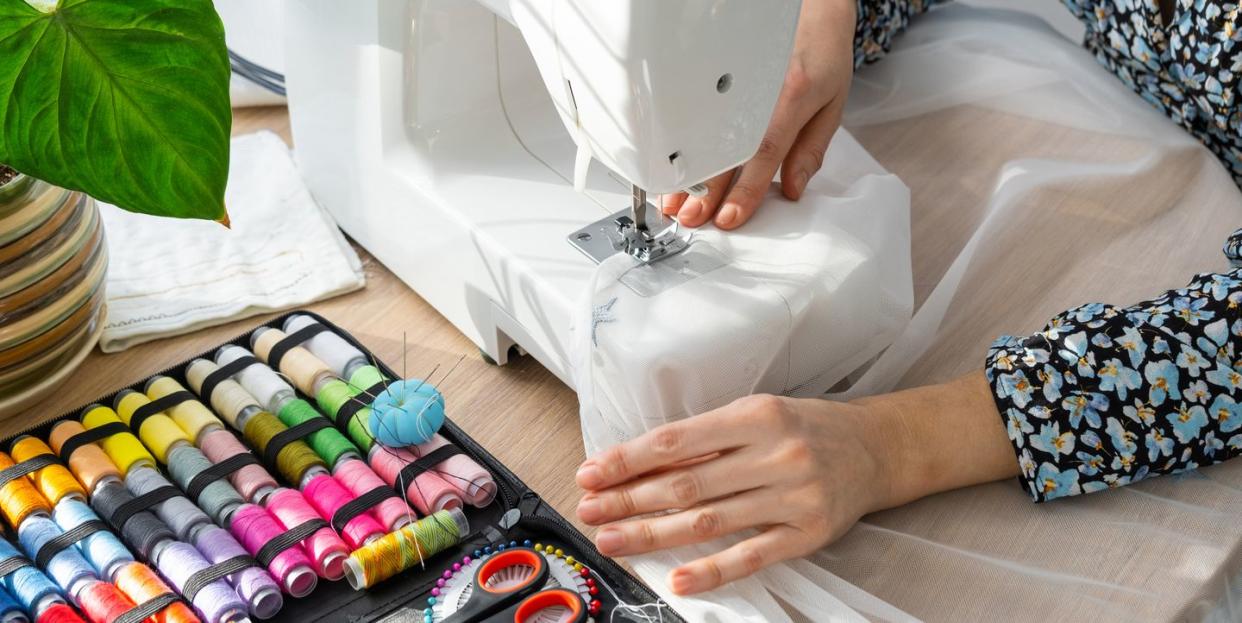
One of the most exciting parts of a sewer’s journey to making their own clothes or craft projects is exploring sewing patterns. Whether it’s one of our free Prima sewing projects or Prima Patterns, the instructions will ensure you get the right measurement and fit. They will also introduce you to a whole new world of craft terminology.
It might be the photo that draws you into a pattern, but when you start reading, it can feel intimidating to come across a sewing term you’re not familiar with. Don’t be discouraged if you’re not sure what they mean.
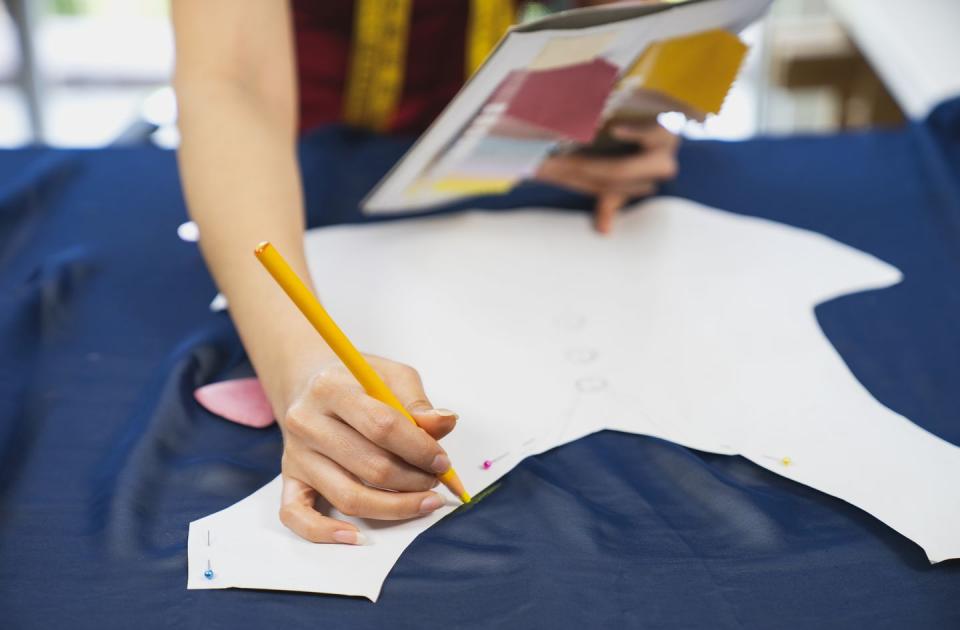
We have created a handy sewing glossary to explain what you need to know. Think of it like a sewing dictionary. These are the most common sewing terms that you’ll come across when you’re using a sewing pattern. Each one is explained to help you feel more confident when you make your next sewing project.
What is a sewing glossary?
Just like in yarn crafts, there are crochet and knitting abbreviations, in stitch crafts there are specific sewing terms that explain different sewing techniques, or aspects of a garment. For example, in your sewing pattern, it may simply say ‘fold a seam’. If you’re not sure what a seam is it can feel confusing which is where a sewing glossary can help.
Prima’s sewing experts have compiled the ultimate sewing glossary for beginners so that you can crack on with your designing dreams, without worry.
Bookmark this page and return to it whenever you need a reminder or a helping hand with your sewing projects.
Sewing glossary: an A-Z of the most common sewing terms
This refers to applying a piece of fabric on top of the main piece of fabric to create a surface design and is commonly used in quilting. It’s also a wonderful way to upcycle clothes by patching things up.
Backstitch
When you start and finish a project on a sewing machine, it's best to secure those first and last stitches. Backstitching sews a couple of forward and reverse stitches in these areas giving you reassurance that the stitching won't come undone. In hand-stitching, backstitch is also a type of embroidery stitch.
Basting
If you're joining two pieces of fabric together and want to hold them in place to get a better idea of a fit, or to check they match up, you can use a basting stitch on a sewing machine. This is a straight stitch set to its longest length so it does the job. It can be easily cut out when no longer needed.
Bias
You may see the instruction to ‘cut on the bias’. This means to cut the fabric at a 45-degree angle to the selvage, or the edge of the fabric where it doesn’t fray. Bias refers to this diagonal and it’s especially important that woven fabrics are cut in this way, so they drape well.
Bobbin
A bobbin is a small spool that goes in your sewing machine. It creates the underneath or bottom stitch of your sewing. You’ll need to wind thread on to the bobbin before using it and sit it properly in your machine to get the right tension for sewing. If your sewing is loose or the machine isn’t stitching properly it’s always worth checking the bobbin tension.
Clip
When you’re cutting out curved shapes like an armhole, heart or paisley, small cuts or ‘clips’ in the seam allowance help the pieces maintain their shape. You can do a small straight snip with scissors, cut corners or cut a small triangle. Choose the technique that’s best suited to your shape.
Dart
This is a cutting technique that shapes a garment by pulling the fabric in and making it flat. There are different types of darts, but you’ll often find them around waists, busts and trousers. They can be identified on sewing patterns as large triangles.
Drape
An important aspect of clothes-making, drape refers to how fabric hangs on a body. Drape is also useful in interiors, for example, ensuring curtains or tablecloths hang correctly. You can test the drape of a fabric before you buy it to see how it hangs. Visit your local haberdashery and ask if they can unroll a metre and let it hang down so you can observe the drape.
Easing in
Cutting your fabric slightly bigger to the final size of your garment allows for movement so that clothing sits properly on a body. Easing in is when you evenly distribute this excess fabric and smoothly sew it into your design without creating any noticeable gathers or puckering up.
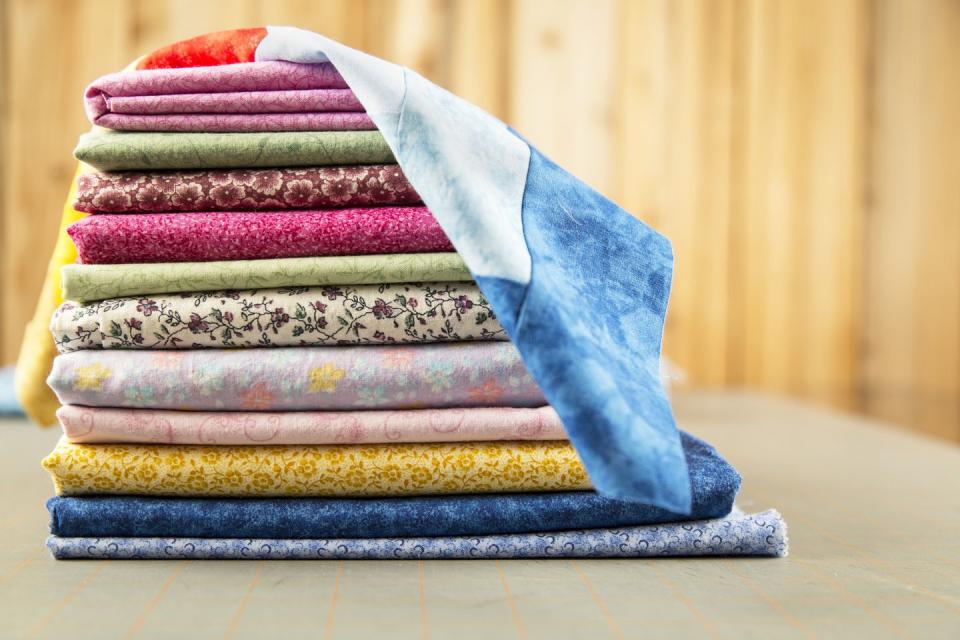
Fat quarter
These are pre-cut pieces of fabric, typically used for quilting. They have a specific measurement which is 18inches by 22inches or 50cm by 56cm in the UK.
Gather
Gathering is typically used to create ruffles. You can create a gather by stitching a long loose stitch on your machine and then pulling on an end thread to gather the fabric up.
Grain
The direction your fabric is woven is called the grain. Before you cut your fabric you’ll need to establish where the grain line is. This line informs what direction to hold the fabric before it’s cut.
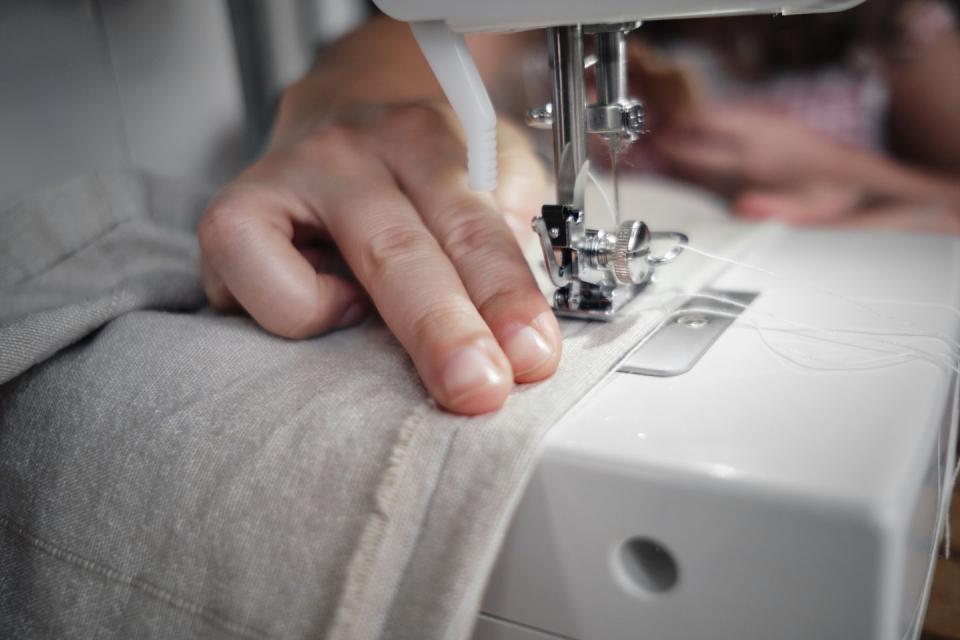
Hem
A hem is the bottom edge of a garment that’s folded over to create a neat end. There are different ways to sew hems, they can be discreet or a visual part of the design.
Interfacing
This is a type of lining that is used underneath your fabric to help give it some structure. It's useful for giving lightweight and sheer fabrics more strength.
Notch
Notches can be found on the edge of sewing patterns resembling small triangles. They help you line up your fabrics so that you stitch them in the right place. Once you’ve cut out your fabric, mark the notches. Do this by cutting a small snip with a pair of scissors.
Pressing
This is a finishing technique that flattens seams. Open out your seams and pressing them with an iron to neaten them.
Right side
Fabrics have two sides to them. The one that has the main print or fabric design on is the right side of the fabric. If you’re not sure which the right side is, try and compare both sides and look for subtle differences. The right side will look and feel more prominent, may be brighter in colour or even have a texture on it.
Seam
This refers to the where two fabrics are joined together by stitches.
Seam allowance
Seams typically have a width to them which allows a to be turned inside out or adjusted. If your sewing pattern doesn’t state a seam allowance, it's typically 1.5cm.
Selvage
Every fabric has edges. The selvage is the edge that doesn’t fray.
Tacking
Similar to basting but done by hand. Tacking is where you hand-stitch long, loose stitches to hold two pieces of fabric in place. They can later be cut out.
Toile
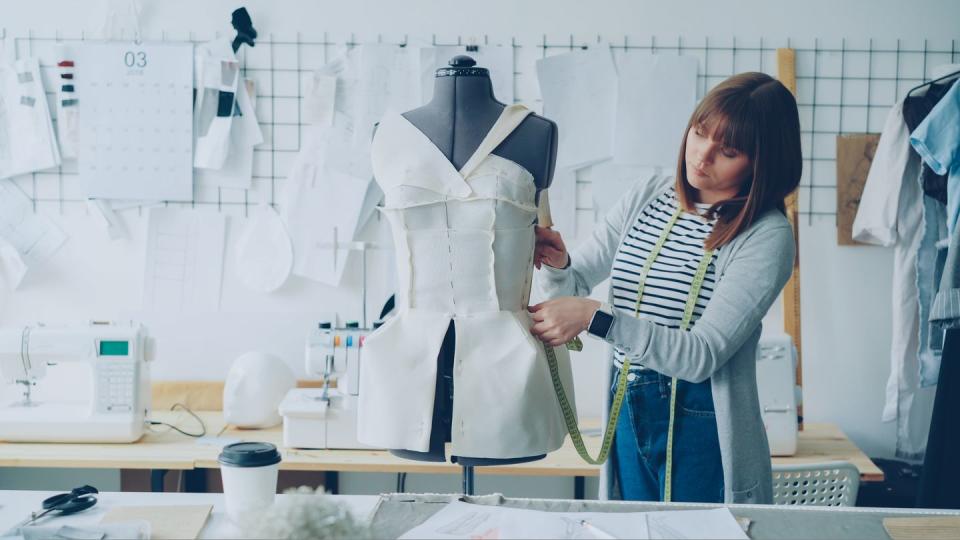
A sewing term that has been adapted from French tailoring, a toile is a mock-up or test garment. It’s a way to practise cutting and fitting a garment using a cheaper fabric, such as a plain calico. You can make adjustments at the toile stage before moving on to using your actual fabric.
Topstitch
Some patterns may recommend topstitches, these are visible stitching which can add a decorative touch since they will be seen.
Wrong side
This is the reverse or backside of the fabric. If it’s a printed fabric it won’t show the design or if it’s a textured fabric it will be at the back of where the surface design is.
Zipper foot
If you’re attaching a zip, a zipper foot can help you line up and position your zip correctly. It’s a detachable foot that can be added to your sewing machine when needed.
Ready to put our sewing glossary to the test? Check out our free Prima sewing patterns to find inspiration for your next sewing project. And don't forget to bookmark our knitting abbreviations too.
Do you love crafting? Share your creations with us by tagging @primamag in your pictures on Instagram!
You Might Also Like


